In This Our Life

Brief Synopsis
Cast & Crew
John Huston
Bette Davis
Olivia De Havilland
George Brent
Dennis Morgan
Charles Coburn
Film Details
Technical Specs

Synopsis
Asa Timberlake has lost his money to William Fitzroy, his former partner in the tobacco business. His wife Lavinia, William's sister, and he have two daughters: Roy, who is married to Dr. Peter Kingsmill, and Stanley, engaged to be married to lawyer Craig Fleming. The selfish Stanley is the favorite of her uncle William, who showers her with expensive presents. The night before her wedding, Stanley runs off with Roy's husband. Roy wastes no time mourning, but continues with her decorating business and divorces Peter, leaving him free to marry Stanley. Sometime later, Roy encounters Craig in the park, and they begin to seeing each other. Craig hires Parry Clay, the son of the Timberlake maid, Minerva, to work in his law office to help Parry put himself through law school. William offers to make Craig his attorney if he will drop certain poorer clients, and when Craig refuses, Roy agrees to marry him as soon as possible. Meanwhile, in Baltimore, Stanley's marriage deteriorates: she spends too much money and Peter drinks too much. Finally, in desperation, Peter commits suicide, and Roy travels to Baltimore to bring her sister home. As soon as Stanley recovers, she resolves to win back Craig's affections. She visits Craig's office under the pretext of wanting information about Peter's insurance policy. Learning that Stanley wants money to leave town, Craig offers to arrange a loan. Stanley then asks him to dinner at a local tavern. When he does not appear, Stanley gets very drunk. Driving too fast, she hits and kills a child. Stanley's car is recognized, but when the police question her, she claims that Parry was driving her car that night and that he must have committed the crime. Roy is suspicious, however, and learns from Minerva that Parry was at home on the evening in question. Roy is convinced that Stanley is lying, but Craig is still unsure. He tricks Stanley into facing Parry, who is now in jail, but she still refuses to tell the truth. Craig reminds her that she had invited him to the tavern and when he tells her that he questioned the bartender, Stanley breaks down. Craig insists on taking her to the district attorney, but Stanley, under the guise of changing her clothes sneaks out. She drives to William's and begs him to save her from jail. William, who has just learned that he has only six months to live, is too stunned by the news to pay attention to his niece, however. The police, who have been summoned by Craig, arrive at the house and Stanley once again tries to escape. The police see her and chase the car. During the chase, Stanley crashes the car and dies.

Director

John Huston
Cast

Bette Davis

Olivia De Havilland
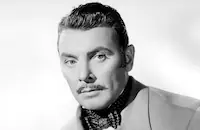
George Brent

Dennis Morgan

Charles Coburn

Frank Craven

Billie Burke

Hattie Mcdaniel
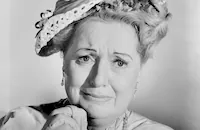
Lee Patrick
Mary Servoss
Ernest Anderson

William B. Davidson
Edward Fielding

John Hamilton
William Forrest

Walter Huston
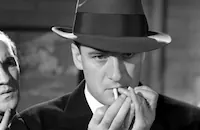
Elliott Sullivan
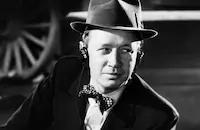
Eddie Acuff
Alan Bridge
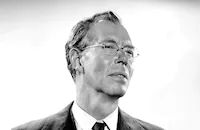
Walter Baldwin
Herbert Heywood
George Reed
Dudley Dickerson
Walter Brooke
Ruth Ford
Billy Wayne
Ira Buck Woods
Sam Mcdaniel
Billy Mitchell
Napoleon Simpson

Sunshine Sammy Morrison
Jester Hairston
Freddie Jackson
Fred Kelsey
Frank Mayo
Eddy Chandler

Lee Phelps
Reid Kilpatrick
Pat Mcveigh

Jack Mower
Crew
Edward Blatt
Robert Burns
Leo F. Forbstein
Hugo Friedhofer
Robert Haas
Ernie Haller
Byron Haskin
William Holmes
Howard Koch
Robert B. Lee
David Lewis
Orry-kelly
Max Steiner
Jack Sullivan
Perc Westmore

Photo Collections
Videos
Movie Clip




Trailer
Hosted Intro
Film Details
Technical Specs

Articles
In This Our Life
In This Our Life was based on a Pulitzer Prize-winning novel about the contemporary South by Ellen Glasgow. John Huston, whose directorial debut, The Maltese Falcon (1941), had been a surprise hit, would be directing his first all-star vehicle. On Huston's suggestion, Warner Brothers had hired Howard Koch to write the script. Huston later claimed that he disliked the script, but since he had selected Koch, he felt bound to stand by him. Huston also said he was seduced by the idea of working with stars like Davis and de Havilland. With both actresses, Huston got more than he bargained for.
The two women were friends and had great respect for each other's work. The real battle on In This Our Life was one for control, between Huston and Davis. Bette often challenged her directors, and she felt that Huston had not earned his position due to talent, but because his father was the respected actor Walter Huston. Additionally, Huston quickly fell in love with de Havilland, and Davis felt the director was favoring Olivia with more close-ups. Davis was quick to let Huston know who the star was, and took her already exaggerated character over the top. In his autobiography, however, Huston claimed that she did so with his blessing. "There is something elemental about Bette -- a demon within her that threatens to break out and eat everybody....The studio was afraid of her; afraid of her demon. They confused it with overacting. Over their objections, I let the demon go; some critics thought Bette's performance was one of her finest."
One strikingly modern element of In This Our Life is its treatment of the African-American characters. Parry Clay is a dignified young man, who is studying to become a lawyer. The studio was having trouble casting the role, until Davis noticed Ernest Anderson, a waiter in the studio's restaurant. She was impressed by his sensitive face and serious demeanor, and pointed him out to Huston. Huston agreed, and Anderson gave a fine performance as Parry.
In later years Davis was highly critical of In This Our Life, and blamed the script and Huston's direction. If there was any real-life catfight connected with the film, it happened when Bette Davis met author Ellen Glasgow. The outraged novelist minced no words in telling Davis how much she hated the film. Davis tried to lighten the atmosphere: "You should have been an actress, Miss Glasgow - you're so volatile!" "If I had chosen acting over writing," Glasgow shot back, "I wouldn't be the overacting ham you are!"
Producer: David Lewis
Director: John Huston
Screenplay: Howard Koch, John Huston, based on the novel by Ellen Glasgow
Editor: William Holmes
Cinematography: Ernest Haller
Art Direction: Robert Haas
Music: Max Steiner
Cast: Bette Davis (Stanley Timberlake), Olivia de Havilland (Roy Timberlake), George Brent (Craig Fleming), Dennis Morgan (Peter Kingsmill), Charles Coburn (William Fitzroy), Frank Craven (Asa Timberlake), Billie Burke (Lavinia Timberlake).
BW-97m. Closed captioning.
by Margarita Landazuri

In This Our Life
In This Our Life - Bette Davis & Olivia de Havilland in John Huston's IN THIS OUR LIFE on DVD
The story, based on a Pulitzer Prize-winning novel by Ellen Glasgow, finds Davis and Olivia de Havilland playing sisters named Stanley and Roy Timberlake (the masculine names are never explained) living in the south with their parents. Their father (Frank Craven) was swindled out of his business by his brother-in-law and former partner (Charles Coburn, superb), who is fond of his niece Stanley (Davis) to a disturbing degree. The movie hints very strongly, in fact, that they have had an incestual relationship, and Coburn and Davis' scenes together are the best in the picture, full of tension and venom. Not too long after Stanley runs off with Roy's fiance (Dennis Morgan), Roy starts seeing Stanley's former fiancé (George Brent), a lawyer. Tragedy strikes, followed by another, and ultimately Stanley tries to shift blame for a fatal accident onto a young black man whom Brent has hired to work in his office as he studies for law school himself. This racial plot thread is woven into the story well, and is quite unusual for a movie of this time.
The well-constructed plot, pointed direction by Huston, fiery performance by Davis, and top-notch turns by Coburn and de Havilland (an underrated beauty) make In This Our Life compulsively watchable. Ernest Anderson as the young black man also holds his own; his scene in a jail with Davis is tense and first-rate. And Hattie McDaniel is given a chance here to bring touching depth to her role as a maid and Anderson's mother. Lee Patrick appears in a supporting role as an annoying, unclassy dame, and must have relished delivering the word "chic" as "chick" in the line, "that's an awful chic hat you're wearing!" Walter Huston pops up in a cameo as a bartender.
In This Our Life is available as part of Warner Home Video's fine new box set Bette Davis Collection, Volume 3, a collection of six Davis pictures including The Old Maid (1939), All This and Heaven, Too (1940), The Great Lie (1941), Watch on the Rhine (1943) and Deception (1946). All the titles have been beautifully restored, with clean, sharp images and clear sound. Davis was the highest-paid woman in America in 1942, and these titles are a good representation of her at her peak popularity. Each DVD contains plentiful extras, including options that allow viewers to watch a "Warner Night at the Movies" with shorts, cartoons, newsreels and trailers presented as they would have been back in the day. (They can also be viewed individually.)
Four of the titles also have commentary tracks, and In This Our Life's is by film historian Jeanine Basinger, author of the book A Woman's View, which traces the genre of the woman's picture. Her commentary is authoritative yet good-humored - in other words, accessible. She points out how Davis and de Havilland play opposites, a common tool of the genre, and is interesting on Davis' acting strategy for this role: "She plays her as a character who knows how to perform to get her way. She's a performer playing a performer." That's very true, and is something a casual viewer probably would not realize until it's pointed out. Basinger also discusses how directing choices favor certain actors in scenes, guiding our response in specific ways, and is excellent on the couch scene between Davis and Coburn, with its subtle yet unmistakable suggestion of incest. Casual viewers and film students both would do well to listen to Basinger.
Other extras include a cartoon, Who's Who in the Zoo, trailers for In This Our Life and Desperate Journey (1942), and a short period newsreel. There are also two short subjects. March On, America (1942) is a 21-minute ride through American history meant to stoke the patriotism of WWII audiences. Photographed in Technicolor, its biggest hoot is its depiction of Francis Scott Key coming up with the lyrics to "The Star-Spangled Banner." As the War of 1812 rages in the distance, he watches from the shoreline with a pad and pen, thinking up the words out loud and quickly writing them down. Easy as pie!
The other short, Spanish Fiesta (1942), is directed by Jean Negulesco and features a performance of the Ballet Russe de Monte Carlo, choreographed by famed Leonide Massine. Massine makes one of his few film appearances as a dancer himself. In a few years he would leave an unforgettable impression on moviegoers in Michael Powell and Emeric Pressburger's The Red Shoes (1948). This short is stunningly photographed in Technicolor, with Ernest Haller one of the two credited cinematographers. Haller also shot In This Our Life.
For more information about In This Our Life, visit Warner Video. To order In This Our Life (only available as part of the Bette Davis Collection, Bol. 3), go to TCM Shopping.
by Jeremy Arnold
In This Our Life - Bette Davis & Olivia de Havilland in John Huston's IN THIS OUR LIFE on DVD
Quotes
Trivia
bartender
in the roadhouse scene
in the roadhouse scene
in the roadhouse scene
in the roadhouse scene
Notes
Ellen Glasgow's novel won the 1942 Pulitzer Prize for Literature. According to a Los Angeles Examiner news item dated February 27, 1941, the studio paid $40,000 for rights to the novel. A February 27, 1941 Hollywood Reporter news item adds that the film was to star Olivia De Havilland and Errol Flynn. Warner Bros. was named to the Honor Roll of Race Relations of 1942 for making this film because of its dignified portrayal of an African-American, although, according to a September 8, 1942 Hollywood Reporter news item, Warner Bros. cut scenes which treated Ernest Anderson's character in a "friendly fashion" in order to avoid offending viewers in the South. In 1943, when the film was examined by the Office of Censorship in Washington, D.C. prior to general export, it was disapproved because "only by the effort of a conscientious white man in whose law office a Negro boy is studying law is the young man saved from a charge of murder...recklessly made by a white woman....[who] claimed that the Negro and not she, was driving the car at the time of the accident and so strong is the race feeling in this Virginia community that the young Negro was practically condemned in advance. It is made abundantly clear that a Negro's testimony in court is almost certain to be disregarded if in conflict with the testimony of a white person." Actor Walter Huston, director John Huston's father, appears briefly in the film in a cameo role as a bartender. Modern sources erroneously note that Humphrey Bogart, Mary Astor, Sidney Greenstreet, Peter Lorre, Ward Bond, Barton MacLane and Elisha Cook, Jr. appear as uncredited bits in the bar scene in the tavern.
















